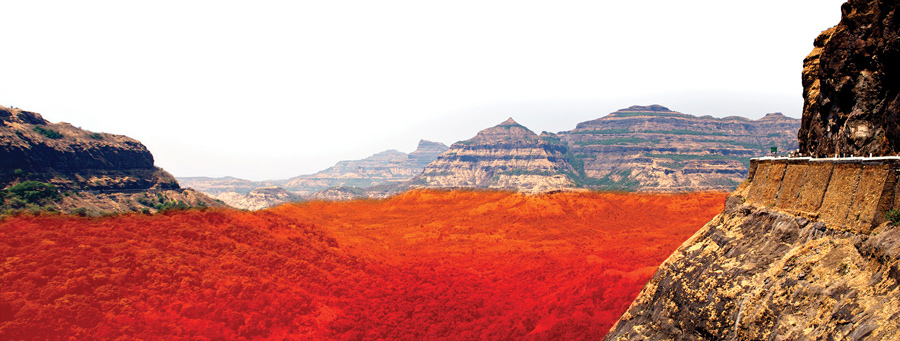
_Loÿc Vanderkluysen
Vanderkluysen is an assistant professor in the Department of Biodiversity, Earth & Environmental Science in the College of Arts and Sciences.
When an enormous asteroid struck the planet 66 million years ago, a worldwide quake shook the magma plumbing of a massive, active volcano — radically changing its style of eruption and hastening the end of the age of dinosaurs.
This sequence of events is supported by a new study published last year in the Geological Society of America Bulletin by a team of scientists, including Drexel University volcanologist Loÿc Vanderkluysen, and led by geologists at UC Berkeley.
Evidence for this colossal, catastrophic chain reaction came from geological features of a massive lava flow field in central-southern India known as the Deccan Traps. Lava erupted in this region for half a million years or more. The event occurred very close, in geologic time, to the major asteroid strike off the coast of Mexico 66 million years ago. In fact, for a time, it was believed that the asteroid strike had triggered the eruption.

Lava_Ocean
This mountainous region is part of a massive lava flow field in central-southern India known as the Deccan Traps. The lava that flowed there millions of years ago was so abundant that an area the size of Texas would have been submerged a mile deep.
It has since been established that the eruption was already underway before the asteroid hit, but evidence presented in the new paper suggests that the impact coincided with a major shift in the volcano’s activity.
“Suddenly, the flows are much larger, the morphology is different and the chemical composition is different,” Vanderkluysen explains.
“This was an existing massive volcanic system that had been there probably several million years, and the impact gave this thing a shake and it mobilized a huge amount of magma over a short amount of time,” says team leader Mark Richards in UC Berkeley’s press release. “The beauty of this theory is that it is very testable, because it predicts that you should have the impact and the beginning of the extinction, and within 100,000 years or so you should have these massive eruptions coming out, which is about how long it might take for the magma to reach the surface.”
